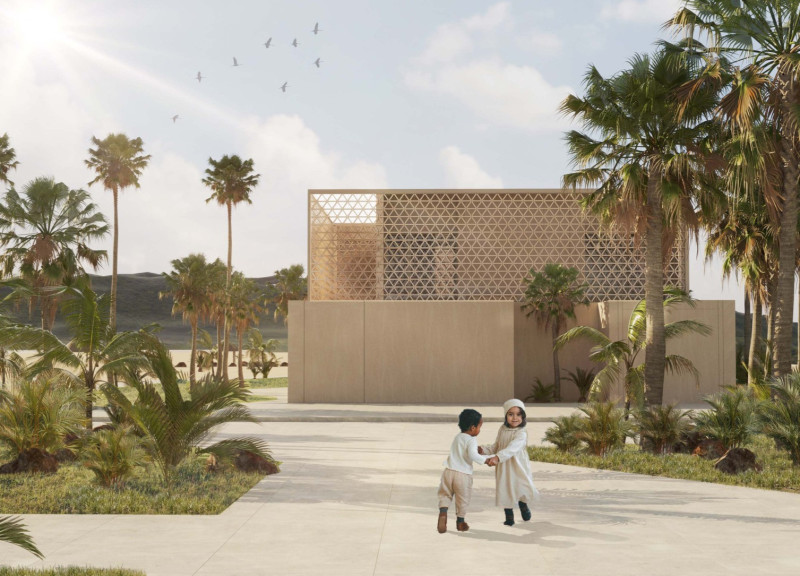5 key facts about this project
The design prioritizes functionality, effectively addressing the requirements of various stakeholders. It establishes defined spaces that are both adaptive and interlinked, allowing for seamless movement throughout the interior. Key areas include communal spaces designed for social interaction, private areas for focused activities, and multipurpose rooms that can evolve based on usage demands. This adaptability is central to the project's success, as it fosters an inclusive environment where different groups can gather, collaborate, and engage.
A significant aspect of the design is its treatment of materials, which are carefully chosen to enhance both the visual experience and the building's performance. The use of concrete provides structural integrity and durability, while wood elements introduce warmth and a sense of nature, contrasting with the sterility often associated with urban environments. Expansive glass panels are incorporated, allowing natural light to permeate the interiors and establishing visual connections to the exterior landscape, which not only enhances the aesthetic appeal but also promotes energy efficiency through passive solar gain. Steel reinforcements support the overall structure, enabling the design flexibility needed for the open spaces, while stone finishes contribute to a timeless quality, grounding the design in its local context.
Unique design approaches are evident throughout the project, most notably in its commitment to sustainability. The architectural decisions reflect an emphasis on minimizing environmental impact, as seen in the integration of green roofs, rainwater harvesting systems, and the consideration of local climate through oriented facades that optimize natural ventilation. This sustainable focus not only enhances the ecological footprint of the building but also raises awareness about environmental stewardship among its users. In addition, the architecture integrates cultural references that resonate with the local community, creating a sense of place and belonging. This contextual awareness manifests in design elements that echo traditional motifs, thereby fostering a connection between the building and its heritage.
One of the project’s hallmark features is its landscaped outdoor areas, which are designed to blend seamlessly with the architecture. These spaces invite outdoor activity and relaxation, reinforcing the building’s role as a community hub. Courtyards and gardens strategically placed around the structure encourage engagement and interaction, enhancing the overall experience of the users while promoting biodiversity. The careful arrangement of these outdoor elements complements the building's design, enabling a fluid transition between the indoor and outdoor environments.
Overall, the project stands as a notable example of modern architecture that thoughtfully engages with its surroundings, offering a space that is both practical and inspiring. Its design encourages exploration and interaction, rendering it not merely a physical structure but a vital part of the community fabric. For those interested in delving deeper into the nuances of this architectural project, a closer examination of the architectural plans, sections, and various design elements will provide greater insight into the innovative ideas that underpin this compelling work of architecture. Exploring these details reveals the careful consideration behind the design, contributing to a broader understanding of its purpose and impact within its environment.


























